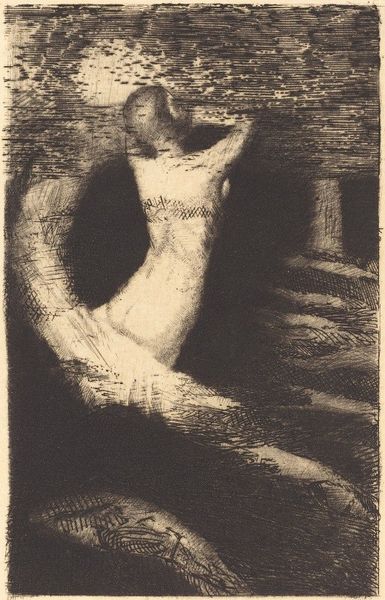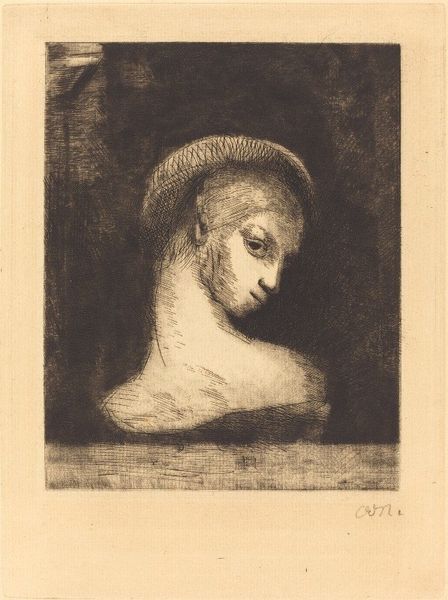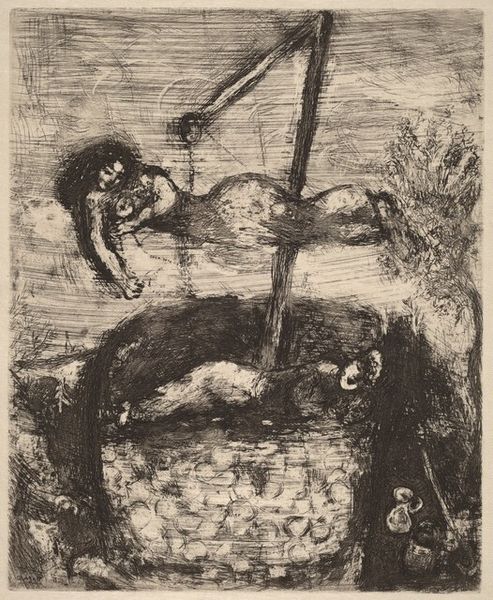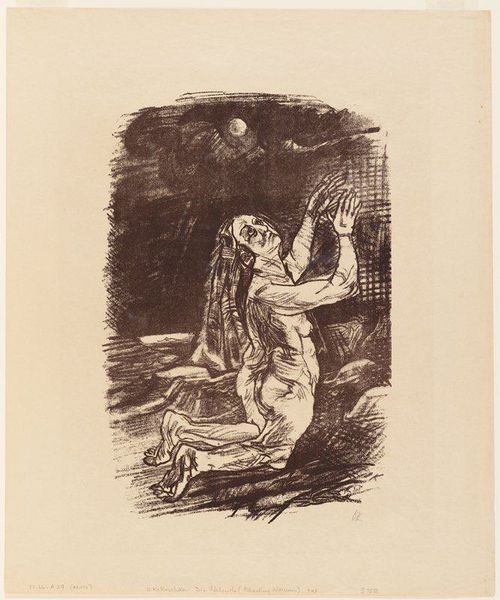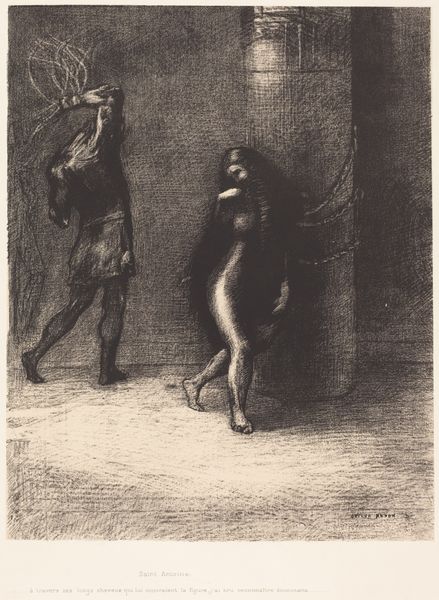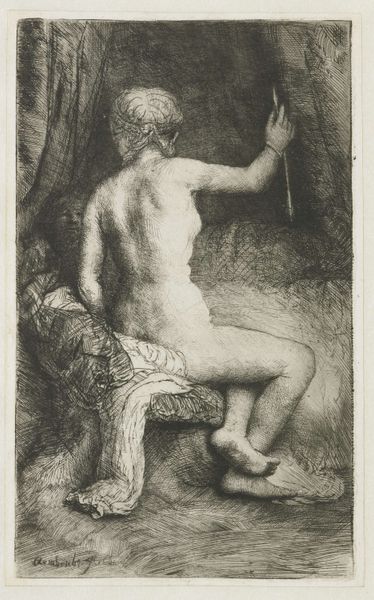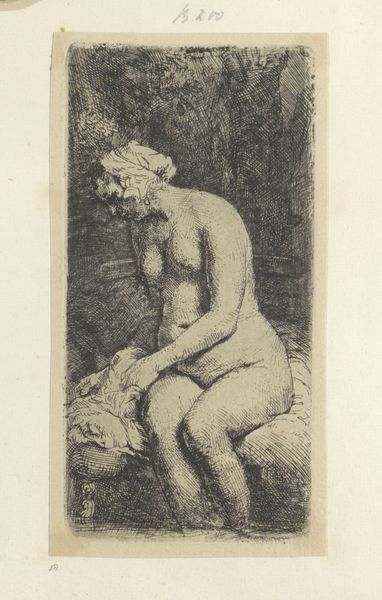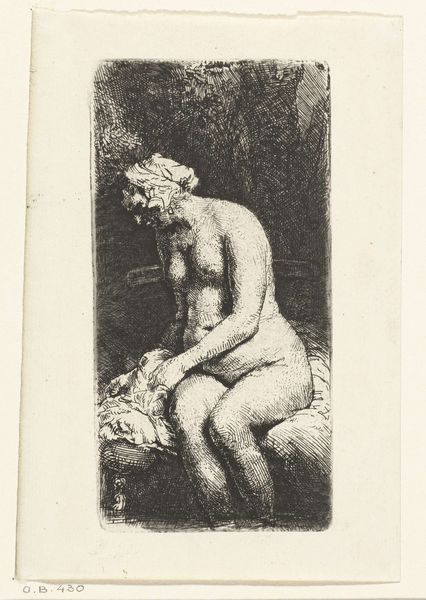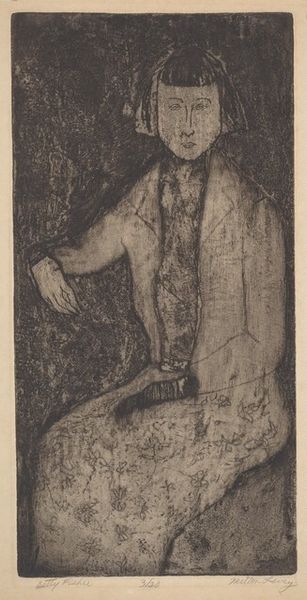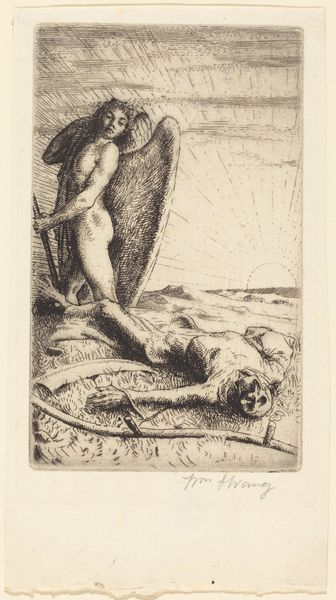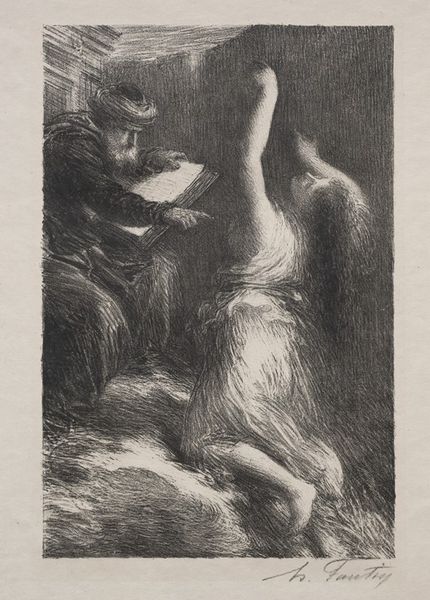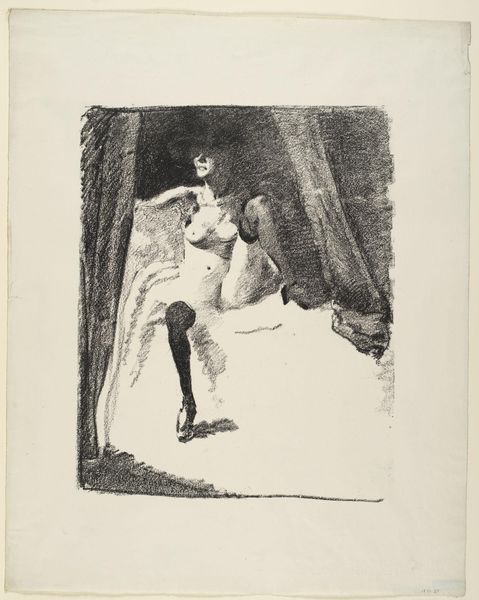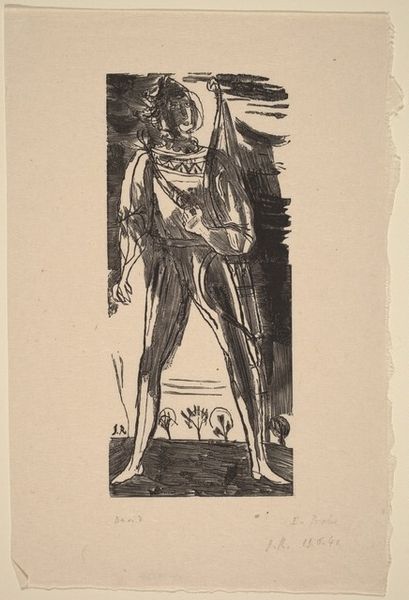
print, etching
#
portrait
# print
#
etching
#
figuration
#
form
#
line
#
symbolism
#
nude
Copyright: Public Domain: Artvee
Editor: Here we have Odilon Redon's "Passage of a Soul," an etching from 1891. It’s striking how Redon uses only blacks and whites to create such an ethereal and ambiguous scene. The figure almost seems to be emerging from or dissolving into the darkness. What stands out to you most about this work? Curator: What arrests me immediately is how Redon stages a confrontation with what cannot be easily seen. Consider the etymology of 'soul' – often associated with breath, spirit, animation. This 'passage' is not simply physical, it speaks of a liminal crossing. Editor: A liminal crossing, that makes sense, considering the ambiguous setting. Curator: Look at the symbolism: the nude figure, unburdened, vulnerable; the dark mass from which she seems to rise, potentially the earthly realm. The lines that define her form, or perhaps imprison her spirit? Editor: The lines definitely add a feeling of unease. It makes me wonder about the constraints, or the societal forces at play here. Curator: Indeed. Redon, deeply engaged with Symbolist ideas, explores the inner landscape, where dreams, anxieties, and repressed desires find visual expression. The etching technique enhances this sense of emergence from shadow. What future form does this ‘soul’ expect? Editor: So the Passage might suggest less of a peaceful passing, but an active transformation or struggle? The symbolism definitely offers multiple interpretations. Curator: Precisely. It is a landscape of the psyche, inviting introspection. Editor: I see now how Redon uses these simple means to communicate complicated ideas, making us think about both form and transformation in profound ways. Thanks for pointing out the depths within this shadowy print.
Comments
No comments
Be the first to comment and join the conversation on the ultimate creative platform.
